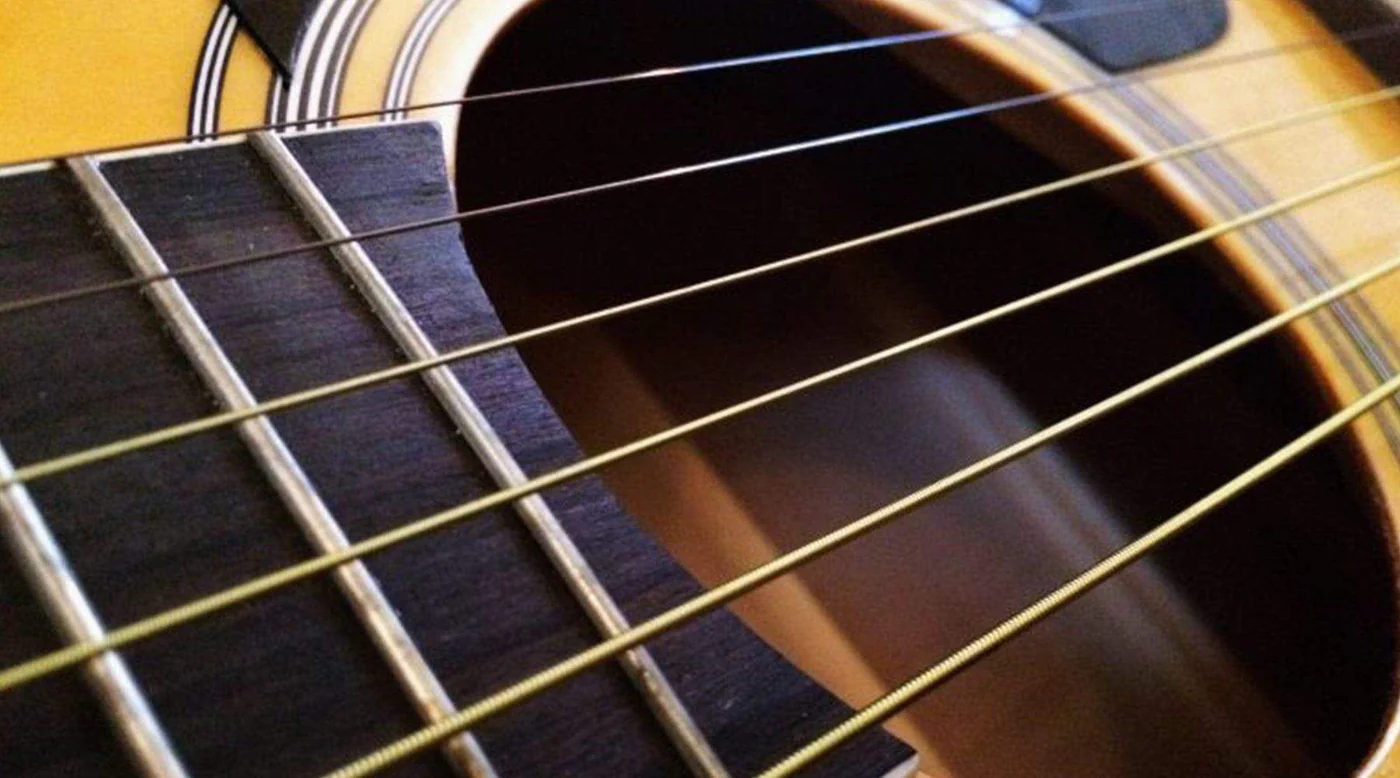Are you a beginner guitarist wondering which gauge of strings to choose for your acoustic guitar? Look no further, because I’m here to guide you through the process! Finding the right gauge of strings is crucial for achieving the sound and playability you desire. As someone who has been playing acoustic guitar for years, I know firsthand how overwhelming it can be to navigate through all the options available. But fear not, this comprehensive guide will provide you with everything you need to know about choosing the perfect gauge of strings for your acoustic guitar. So let’s get started and find out which gauge is best suited for your musical journey!
So, what gauge of strings for acoustic guitar?
Choosing the gauge of strings for your acoustic guitar is an important decision that can greatly impact the sound and playability of your instrument. As a beginner, it can be overwhelming to navigate the various options available on the market. But fear not, this guide will break down everything you need to know about string gauges and help you make an informed decision.
Firstly, what exactly is string gauge? In simple terms, it refers to the thickness or diameter of the strings on your guitar. Thicker strings produce a fuller and louder sound but require more finger strength to play, while thinner strings have a brighter tone and are easier on the fingers.
The most common string gauges for acoustic guitars range from extra light (10-47) to heavy (13-56). Extra light strings are ideal for beginners as they are easier on the fingers and allow for faster playing. However, they may lack volume and depth in sound compared to heavier gauges.
On the other hand, heavy gauge strings may be more challenging for beginners but offer a richer tone with better sustain. They also tend to stay in tune longer than lighter gauges due to their increased tension.
So how do you choose which gauge is right for you? It ultimately comes down to personal preference and playing style. If you’re just starting out or have sensitive fingers, opt for lighter gauges until your hands get used to playing regularly. If you prefer strumming chords with strong pressure or want a fuller sound from your guitar, go with heavier gauges.
It’s also worth considering what type of music you’ll be playing. Lighter gauges are better suited for genres like folk or country where fast picking is involved, while heavier gauges work well for rock or blues styles that require bending notes frequently.
Another factor that affects string gauge choice is your guitar’s body size and construction. Smaller body guitars typically benefit from lighter gauge strings as they exert less tension on the instrument. On the other hand, larger body guitars can handle heavier gauges without compromising sound quality.
Ultimately, it’s important to experiment with different string gauges to find what works best for you and your guitar. Don’t be afraid to try out different options until you find the perfect fit. And remember, as a beginner, it’s always better to start with lighter gauges and work your way up as your playing skills improve.
In conclusion, choosing the right gauge of strings for your acoustic guitar is a personal decision that depends on factors such as playing style, genre of music, and guitar construction. By understanding the differences between string gauges and experimenting with various options, you’ll be able to find the perfect set that enhances your playing experience and produces beautiful music.
Understanding the Importance of String Gauge for Acoustic Guitars
When it comes to acoustic guitars, the choice of string gauge is crucial. Gauges refer to the thickness of the strings, and they can dramatically affect your instrument’s sound and playability. Thicker strings produce a richer, more powerful tone, while lighter strings offer easier playability and a brighter sound. Many players don’t realize that even small changes in gauge can shift how their guitar resonates. For example, switching from light to medium gauge may provide a fuller bass response but could make bending notes more challenging.
Moreover, understanding string gauge helps players tailor their instrument to match their style of music. If you enjoy fingerpicking or softer strumming patterns, lighter gauges are often preferred because they require less pressure on your fingers. Conversely, if you’re into heavy strumming or playing in lower tunings, heavier gauges might be better suited for those needs as they maintain tension well under aggressive playing styles.
Choosing the right gauge also impacts tuning stability and intonation; thicker strings generally hold pitch better but may make fret adjustments necessary if changing gauges frequently.
- Consider experimenting with different sets.
- Your musical preferences will guide your choice.
- The perfect fit enhances both comfort and creativity.

Read also: is washburn a good guitar
Unraveling Different Types of Acoustic Guitar Strings and Their Gauges
When choosing acoustic guitar strings, understanding the different types and gauges can transform your playing experience. Strings are made from various materials like bronze, phosphor bronze, and nylon, each offering unique tonal qualities. For instance, bronze strings provide a bright sound that resonates beautifully, ideal for fingerpicking or strumming. On the other hand, phosphor bronze adds warmth to the tone, making it perfect for those who enjoy rich melodies. Additionally, nylon strings lend a softer touch and are commonly used in classical guitars; they produce a mellow sound that’s gentle on the ears.
The gauge of a string refers to its thickness and impacts playability significantly. Lighter gauges (like .010-.047) are easier to press down on the fretboard, which is great for beginners or those who prefer quick transitions between chords. In contrast, heavier gauges (like .013-.056) offer more volume and sustain but require more finger strength to play effectively. This means musicians must find a balance that suits their style: lighter strings for speed and ease versus heavier ones for richer tones. Ultimately, exploring these options lets you tailor your instrument’s voice while enhancing your personal playing style.
Experimenting with different combinations will help you discover what feels just right!
How to Choose the Right Gauge of Strings Based on Your Playing Style
Selecting the right gauge of strings for your instrument is an important decision that can significantly impact your playing experience. If you enjoy a softer touch and play fingerstyle or light strumming, lighter gauge strings might be ideal. These thinner strings are easier to press down, making them perfect for intricate melodies and delicate chords. They also tend to produce a brighter sound, enhancing clarity in your music. However, if you’re drawn to powerful strumming or heavy picking techniques, consider heavier gauge strings. While they require more finger strength and may take some getting used to, they offer greater volume and sustain, enriching the overall tone.
When you think about how you play—whether it’s soft ballads or hard rock—this will guide your choice. A few factors come into play when selecting string gauge:
- Tension: Heavier gauges provide more tension.
- Tone: Lighter gauges yield a brighter tone.
- Easier bending: Thinner strings bend with less effort.
Ultimately, experimenting with different gauges can make all the difference in finding what feels best under your fingers while complementing your unique style!
Impact of Changing String Gauges on Your Acoustic Guitar’s Tone and Playability
Changing the string gauge on your acoustic guitar can significantly alter its tone and playability. When you switch to lighter strings, such as .010 or .011 gauges, you might notice a brighter sound with enhanced treble clarity. This change allows for easier bending of notes and requires less finger strength, making it perfect for beginners or those who prefer softer playing styles. However, while lighter strings may provide a sweeter high-end shimmer, they often sacrifice some bass response and overall volume. The guitar’s body vibrates differently depending on the tension exerted by the strings; therefore, adjusting gauge can lead to variations in resonance.
On the other hand, heavier strings like .013 or .014 offer a fuller sound that resonates deeply within the guitar’s body. These thicker strings produce richer bass tones and greater projection—ideal for strumming dynamics in folk or bluegrass music. However, playing with heavier gauges often demands more finger pressure and stamina from musicians; this could be challenging for newer players still developing their skills. Ultimately, finding your ideal string gauge is highly personal—it requires experimentation to discover what best suits your style while enhancing your instrument’s unique voice.
In summary,
- Light gauges = brighter tone & easier playability
- Heavy gauges = richer sound & increased tension
Each choice shapes not just how music sounds but also how it feels beneath your fingertips!
You may also like: Martin D-28 Marquis Acoustic Guitar
Conclusion: Reaping the Benefits of Choosing The Correct String Gauge for Your Acoustic Guitar
Selecting the right string gauge for your acoustic guitar can significantly enhance your playing experience. Strings come in various thicknesses, known as gauges, and each has unique characteristics that affect sound and playability. Lighter gauges are easier to press down, making them ideal for beginners or those who prefer fingerstyle playing. They produce a bright tone with a more delicate feel, which is perfect for soft melodies or intricate picking patterns. On the other hand, heavier strings offer increased volume and sustain while providing a richer tonal depth that resonates beautifully when strummed hard.
Choosing the correct string gauge also impacts your instrument’s health. For instance, lighter strings exert less tension on the neck of the guitar, reducing stress on its structure over time. However, if you’re looking to achieve powerful chords or robust rhythms without compromising sound quality, medium to heavy gauges might be more appropriate despite their added tension. To find your optimal fit:
- Experiment with different brands.
- Consider how often you perform.
- Tailor your choice based on musical style.
Ultimately, understanding these nuances helps you unlock not just better sounds but also greater joy in every note played!

